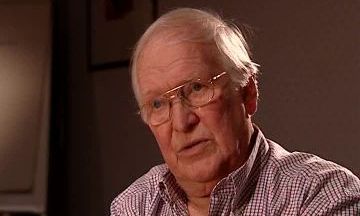I'm back in London and... after three years, and I'm walking the streets of London between medical schools, knocking on doors trying to get a job, when one day I'm in Oxford Street and a hand falls on my shoulders, and this is Professor Garry. He was the professor that I originally went to work with in Dundee. Meanwhile, he'd moved to Glasgow. And, so he took me back to his hotel and had some tea and... and anyway, he said, 'Well, you know, I could give you a job in Glasgow, but how about the Vet School?' Now, this was now 1950 and after the war, the post-war government decided to nationalise all the Vet schools. There was one, the Royal Dick, at Edinburgh which was part... in the University sector. All the others were private companies. So, Glasgow had a thing called the Glasgow Veterinary College, housed in an 1840s building in Buccleuch Street, and it was pretty well... it was a dump, to put it finely. But, the University took it over... there has... they had to by law. They were told: Take it over. And, they didn't know what to do with the Vet School, but they did a clever thing. They head-hunted the most successful veterinarian in the West of Scotland, a man called William Weipers – Bill Weipers. And, so he said, 'Why don't you come and meet Weipers?' So, I went and met him, and he was a man I learned to love. He had... he... he was like a dog with grizzled hair, he had big eyebrows, sharp face, piercing eyes, and he'd go right to the point, and he could obfuscate like nobody if he didn't want you to make a decision. He could talk and talk and talk and talk. Anyway, he offered me a job, so I got the job at a very tender age of starting a new department of physiology from scratch. There was nothing there. So I built myself a workshop and got my labs going and so on, and gradually it filtered up to the University that there was some funny young guy down in the Vet School who seemed to have equipment and be able to do experiments and things. So I suddenly found people knocking at my door, two of them I eventually worked with: two Georges – George Smith... I beg your pardon, two Smiths: George Smith and Adam Smith.





